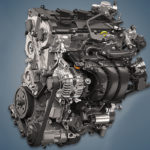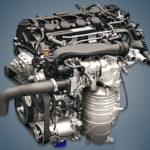The 1.8-liter 16-valve Peugeot XU7JP4 or LFY engine was produced from 1996 to 2002 and was installed on the most popular concern models of that time, for example 306 or 406. After the end of production in France, the assembly of the motor continued in Iran for the Samand model.
Engines of the XU family: XU5JP, XU7JB, XU7JP, XU7JP4, XU10J2, XU10J4R.
Specifications
| Production years | 1996-2002 |
| Displacement, cc | 1761 |
| Fuel system | injector |
| Power output, hp | 110 |
| Torque output, Nm | 158 |
| Cylinder block | aluminum R4 |
| Block head | aluminum 16v |
| Cylinder bore, mm | 83 |
| Piston stroke, mm | 81.4 |
| Compression ratio | 10.4 |
| Features | no |
| Hydraulic lifters | yes |
| Timing drive | belt |
| Phase regulator | no |
| Turbocharging | no |
| Recommended engine oil | 5W-40 |
| Engine oil capacity, liter | 5.0 |
| Fuel type | petrol |
| Euro standards | EURO 2 |
| Fuel consumption, L/100 km (for Peugeot 406 1998) — city — highway — combined |
12.2 6.7 8.7 |
| Engine lifespan, km | ~300 000 |
| Weight, kg | 120 |
The engine was installed on:
- Citroen Xantia in 1997 – 2001;
- Citroen Xsara in 1997 – 2001;
- Citroen ZX in 1996 – 1997;
- Peugeot 306 I (N3/N5) in 1997 – 2001;
- Peugeot 406 I (D8/D9) in 1996 – 2000.
Disadvantages of the XU7JP4 engine
- All power units of the XU line are characterized by unstable operation in cold weather;
- In addition, the crankcase ventilation tubes often freeze and drive lubricant through the dipstick;
- Glitches of the idle speed controller often lead to floating engine speeds;
- From low-quality fuel, candles quickly give up, and after them, ignition coils;
- Monitor the condition of the timing belt, it cracks before the prescribed 120,000 km;
- Hydraulic lifters do not tolerate cheap oil and can knock for 50,000 km;
- Oil leaks regularly from under the valve cover and crankshaft oil seal;
- Some owners complain about a small oil burner up to 0.5 liters per 1000 km.






